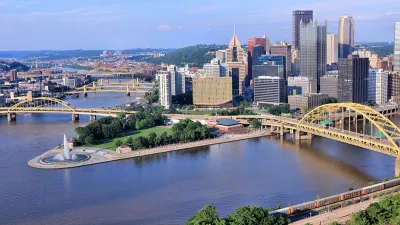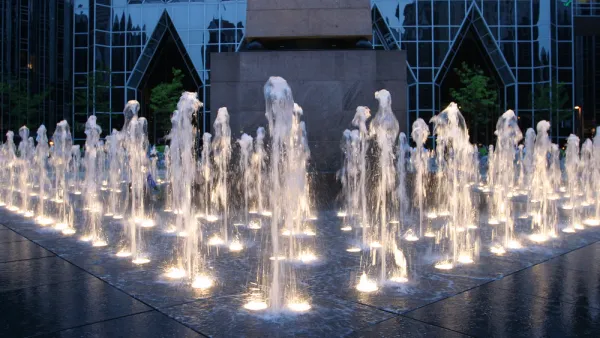From St. Louis to Baltimore, the Rustbelt Cities are seeing a growing population of millennials as a possible cure to shrinking populations and stagnating economies.

The millennial generations, those born starting in 1982, are being seen as potential saviors of the once formidable Rustbelt cities that have fallen on hard economic times as manufacturing and industrial jobs have disappeared. Tim Henderson, writing in Stateline, finds that the growing number of educated millennials moving to cities such as St. Louis, Pittsburgh, Buffalo and Grand Rapids, has given hope for some form of economic rebirth based on a transition to a high-tech, knowledge economy. One of the primary factors attracting this growth can be found in the affordable housing stock available in these cities.
The high cost of living in high-tech centers like Seattle and San Francisco has made them less attractive to many young people, [author Antoine van Agtmael] said. At the same time, affordable housing has helped new hot spots of innovation in Rust Belt cities to emerge.
...
Libby Francis said she came to Baltimore from the District of Columbia looking for urban life at a lower cost in her mid-30s, about 10 years ago.
“I was a single adult chasing the dream of homeownership and I’m not made of money. It was getting pretty depressing,” Francis said. In Hampden she found a house for $110,000 and the financial freedom to open a locally sourced flower shop. “You can actually be an artist here and pay the rent.”
Cities such as Pittsburgh have also invested in amenities that might attract new "fast-growth" businesses, including new public spaces and apartments in the city's downtown.
FULL STORY: Millennials Bring New Life to Some Rust Belt Cities

National Parks Layoffs Will Cause Communities to Lose Billions
Thousands of essential park workers were laid off this week, just before the busy spring break season.

Retro-silient?: America’s First “Eco-burb,” The Woodlands Turns 50
A master-planned community north of Houston offers lessons on green infrastructure and resilient design, but falls short of its founder’s lofty affordability and walkability goals.

Delivering for America Plan Will Downgrade Mail Service in at Least 49.5 Percent of Zip Codes
Republican and Democrat lawmakers criticize the plan for its disproportionate negative impact on rural communities.

Test News Post 1
This is a summary

Test News Headline 46
Test for the image on the front page.

Balancing Bombs and Butterflies: How the National Guard Protects a Rare Species
The National Guard at Fort Indiantown Gap uses GIS technology and land management strategies to balance military training with conservation efforts, ensuring the survival of the rare eastern regal fritillary butterfly.
Urban Design for Planners 1: Software Tools
This six-course series explores essential urban design concepts using open source software and equips planners with the tools they need to participate fully in the urban design process.
Planning for Universal Design
Learn the tools for implementing Universal Design in planning regulations.
EMC Planning Group, Inc.
Planetizen
Planetizen
Mpact (formerly Rail~Volution)
Great Falls Development Authority, Inc.
HUDs Office of Policy Development and Research
NYU Wagner Graduate School of Public Service





























